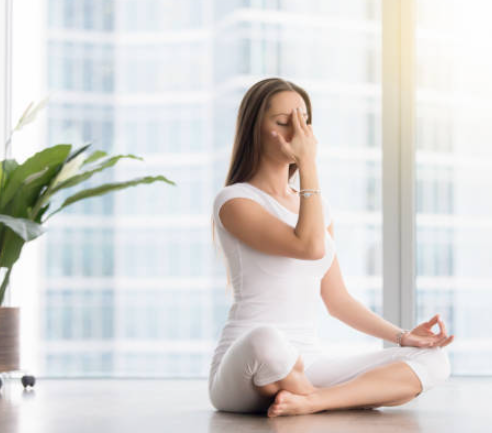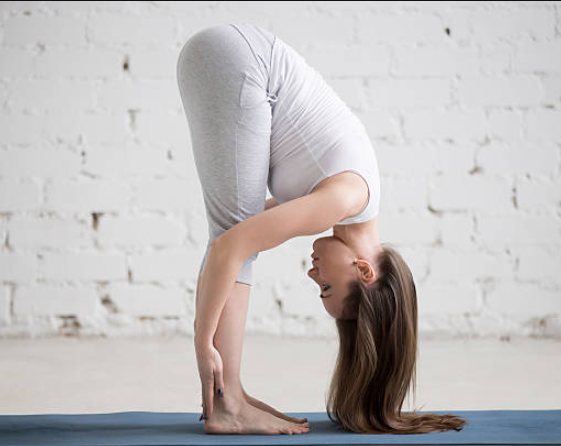In the hustle and bustle of daily life, taking a break to stop chattering inside and outside and allowing your body to rest is a welcome relief. People who practice restorative yoga will find such relief – and more. But what exactly is restorative yoga? We’ll get you covered!
What Is Restorative Yoga?
As the name suggests, restorative yoga promotes healing and renewal, says Alyssa Pfennig, a certified yoga therapist and owner of Embarque Yoga.
“Restorative yoga is a positive form of relaxation that allows you to get into a state of being, not a state of doing,” she says. “When you practice, you move away from the normal activities of the body and mind and experience a deep feeling of relaxation and rejuvenation.”
Restorative yoga instructor Melissa Okabe said that restorative yoga stems from the teachings of renowned yoga instructor and author BKS Iyengar to heal the body from the inside out.

“Restorative yoga is characterized by gentle stretching exercises that use a variety of props to support and maintain various subtle shapes of the body, gently opening, elongating, and encouraging the body to relax, including the nervous system,” Okabe said.
Benefits of Restorative Yoga
Restorative yoga is a mindfulness and body-aware practice with many advantages.
“Restorative yoga relieves stress, calms the nervous system, releases tension, and promotes restful sleep,” says Tiffany Bush, Gaia Yogi and Head of Client Relations.
Other benefits of this gentle form of yoga include increased flexibility as well as relief from pain and stiffness. Restorative yoga can also help reduce anxiety and stress. This practice encourages peace and calm.
Who Can Benefit from Restorative Yoga?
Almost anyone can benefit from restorative yoga. People who find this exercise particularly beneficial and helpful include those suffering from pain, anxiety, or burnout.
“Restorative yoga is suitable for all levels and is a very nourishing, energizing yoga that can benefit anyone, both physically and emotionally,” Okabe said. “After one training session, a lot of people find themselves energetic.”
This practice is good for injured people or people looking to slow down the pace and stretch deeply. It is also ideal for those who are tired from the stress of daily life.
How Is Restorative Yoga Different from Other Forms?
Many traditional forms of yoga, such as hatha yoga, Vinyasa, and Ashtanga yoga, are active physical exercises, while restorative yoga is more relaxing. This is how practice helps the body, mind, and nervous system relax and rejuvenate.
“Restorative poses are usually held longer than traditional yoga classes,” Okabe said. “These poses are fully supported by props that allow your muscles to fully relax to the shape of the pose and even lengthen your tendons and ligaments even deeper.”
Props Used in Restorative Yoga
All asanas (poses) used in restorative yoga are maintained using various props. A typical restorative yoga sequence usually involves five to six poses and a few props. Props allow you to rest and relax while posing.

“Asanas, including backbend, forward bend, side bend, twist, and handstand, are all practiced in a fully acceptable way with the support of throw pillows, blankets, straps, pads, and eye pillows,” Feinig said.
Pfennig says that each pose is held for 5 to 20 minutes. “This gives the body plenty of time to relax and enter the parasympathetic nervous system, resulting in a healing rest experience.”
Where Can I Find Restorative Yoga Classes?
Now that you know how restorative yoga heals and soothes the mind and body, you might want to experience the class for yourself.
Start by checking if your local studio has a restorative yoga class. Also, search online for opportunities in your community. Retreats, spas, and other therapeutic facilities may offer opportunities to attend restorative yoga classes.
If you can’t find any restorative yoga classes nearby, Bush recommends trying online classes. “You can practice from the comfort of your own home,” she said. “For props, items such as pillows, towels, blankets, and books can be used.”
A restorative yoga class can be relaxing, but it may energize you in your busy life.
“A well-designed restorative yoga session promotes the flow of energy, blood and lymph and brings balance to the body,” Finnig said. “You’ll feel energized after practice or the next day. I recommend attending a restorative yoga class at least once a week. ”
